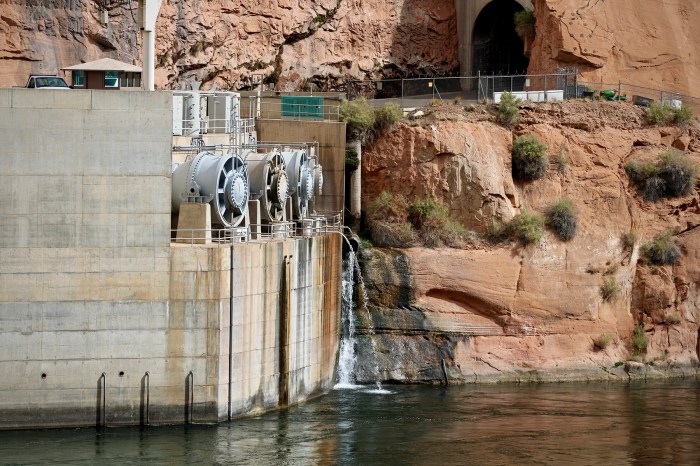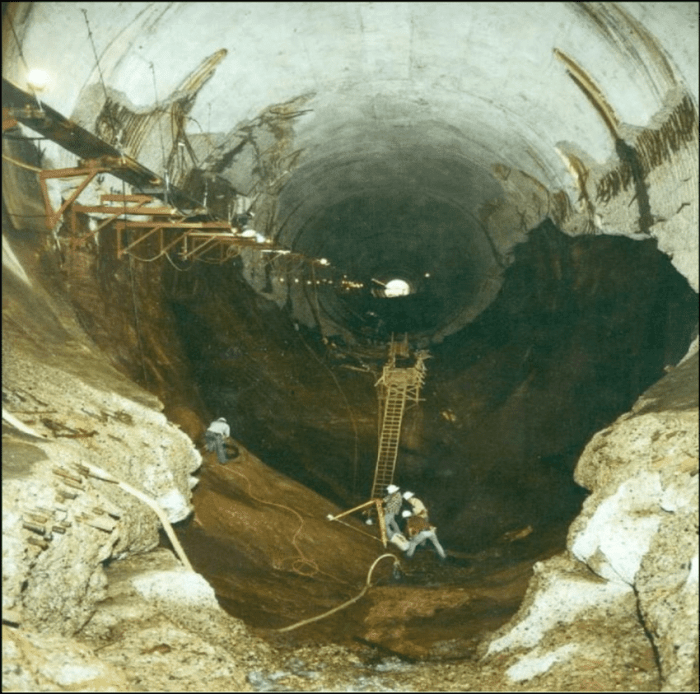Glen canyon dam spillway damage 1983 – The Glen Canyon Dam spillway damage of 1983 stands as a stark reminder of the catastrophic consequences that can result from engineering miscalculations and environmental pressures. This incident, which unfolded over several harrowing days, left an indelible mark on the history of dam construction and water management.
In this comprehensive analysis, we delve into the intricate details of the spillway failure, exploring the contributing factors, assessing the impact, and examining the lessons learned. By unraveling the complexities of this pivotal event, we aim to shed light on the critical importance of meticulous design, rigorous construction, and proactive maintenance in ensuring the safety and integrity of our infrastructure.
Chronology of the 1983 Glen Canyon Dam Spillway Damage: Glen Canyon Dam Spillway Damage 1983

The Glen Canyon Dam spillway damage in 1983 was a significant event that highlighted the importance of proper dam design, construction, and maintenance. The following timeline provides a detailed account of the events leading up to and including the spillway failure:
- 1956:Glen Canyon Dam construction begins.
- 1963:Glen Canyon Dam is completed and begins operation.
- 1972:Cracks appear in the spillway’s concrete piers.
- 1980:Repairs are made to the spillway piers.
- 1983:A large flood event causes the spillway to fail, resulting in extensive damage.
Contributing Factors to the Spillway Damage

Several factors contributed to the failure of the Glen Canyon Dam spillway. These included:
- Design flaws:The spillway’s design did not adequately account for the high flow rates and pressures that could occur during a flood event.
- Construction issues:Construction defects, such as improper placement of concrete, weakened the spillway’s structure.
- Environmental conditions:The harsh environmental conditions, including extreme temperatures and water erosion, further compromised the spillway’s integrity.
Warning signs of potential failure included the cracks that appeared in the spillway piers in 1972. However, these signs were not adequately addressed, leading to the eventual failure of the spillway.
Impact of the Spillway Damage
The Glen Canyon Dam spillway damage had a significant impact on the dam’s structural integrity, water flow, and surrounding environment. The failure caused extensive damage to the spillway, resulting in a loss of flood control capacity. The uncontrolled flow of water also damaged downstream infrastructure and ecosystems.
The economic and social costs of the damage were substantial. The cost of repairs and reconstruction was estimated to be over $100 million. The failure also raised concerns about the safety of other dams and led to increased scrutiny of dam design and construction practices.
Repair and Reconstruction of the Spillway

The repair and reconstruction of the Glen Canyon Dam spillway was a complex and challenging process. The engineering challenges included designing a new spillway that could withstand the high flow rates and pressures of a flood event while minimizing the risk of further damage to the dam.
The repairs also involved innovative solutions, such as the use of a concrete slurry to fill in the cracks and strengthen the spillway’s structure.
The timeline and costs associated with the repairs were significant. The repairs took over two years to complete and cost over $100 million.
Lessons Learned and Safety Enhancements

The Glen Canyon Dam spillway damage was a major event that provided valuable lessons for dam design, construction, and maintenance. The lessons learned included:
- The importance of designing dams to withstand extreme flood events.
- The need for thorough inspections and maintenance of dams to identify and address potential problems.
- The value of public outreach and education to raise awareness of dam safety.
Safety enhancements implemented to prevent similar incidents in the future included:
- Improved dam design standards to account for the potential for extreme flood events.
- Increased monitoring and inspection of dams to identify and address potential problems early on.
- Development of emergency response plans to minimize the impact of dam failures.
Quick FAQs
What were the primary contributing factors to the Glen Canyon Dam spillway damage?
A combination of design flaws, construction issues, and environmental conditions, including heavy rainfall and snowmelt, contributed to the failure.
What were the immediate consequences of the spillway damage?
The immediate consequences included flooding downstream, damage to the dam’s structure, and disruption of water flow.
What long-term impacts did the spillway damage have?
The long-term impacts included increased risk of dam failure, environmental damage, and economic losses.
What lessons were learned from the Glen Canyon Dam spillway damage?
Key lessons learned include the importance of thorough design reviews, rigorous construction oversight, and ongoing monitoring and maintenance.
What safety enhancements were implemented after the Glen Canyon Dam spillway damage?
Safety enhancements included modifications to the spillway design, improved monitoring systems, and enhanced emergency response plans.